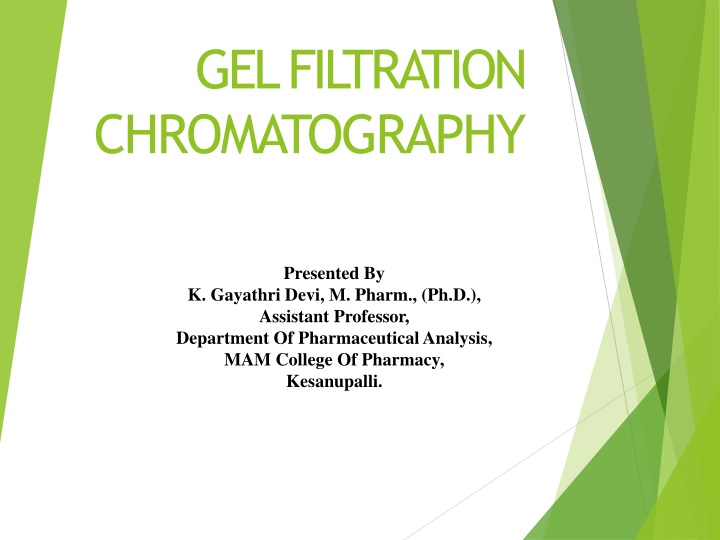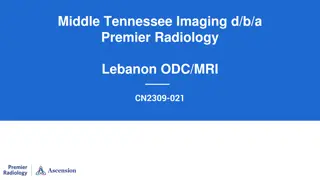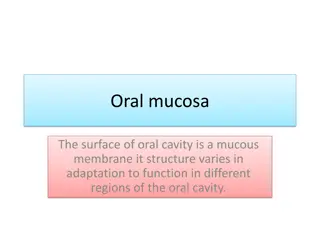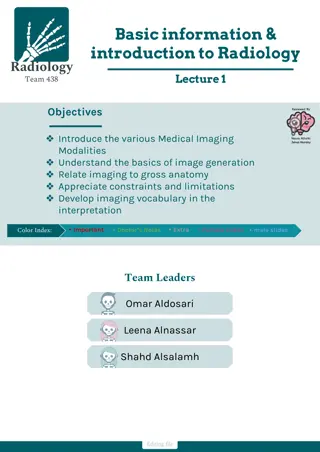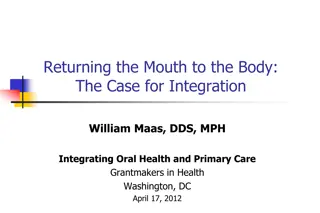The History Of Oral Radiology Discovery
Wilhelm Conrad Roentgen's groundbreaking discovery of X-rays in 1895 revolutionized the field of oral radiology. His findings led to the understanding of the physics behind X-radiation and its various applications in dentistry, including imaging techniques and radiation safety protocols.
Download Presentation

Please find below an Image/Link to download the presentation.
The content on the website is provided AS IS for your information and personal use only. It may not be sold, licensed, or shared on other websites without obtaining consent from the author.If you encounter any issues during the download, it is possible that the publisher has removed the file from their server.
You are allowed to download the files provided on this website for personal or commercial use, subject to the condition that they are used lawfully. All files are the property of their respective owners.
The content on the website is provided AS IS for your information and personal use only. It may not be sold, licensed, or shared on other websites without obtaining consent from the author.
E N D
Presentation Transcript
GEL FILTRATION CHROMATOGRAPHY Presented By K. Gayathri Devi, M. Pharm., (Ph.D.), Assistant Professor, Department Of Pharmaceutical Analysis, MAM College Of Pharmacy, Kesanupalli.
Gel Filtration Chromatography(GFC) Mobile phase liquid Stationary phase porous beads or materialwith a well defined range of poresize.
It separates molecules according to the differences in sizes as they pass through a gel filtration medium packedin column. Unlike ion molecules do not bind to the chromatography medium. It is generally used to separate biological molecules, and to determine molecular weights and molecular weight distributions of polymers. exchange or affinity chromatography ,
The technique can be applied in twodistinct ways: Groupseparations: components of a sample are separatedinto two major groups according to sizerange. S mall molecules (desalting) or free labels are easilyseparated. such as excess salt High resolution fractionationofbiomolecules: Components of a sampleareseparated according to differences in theirmolecular size.
Partition coefficient Partition coefficient or distribution coefficient (kd)is the basis of all types ofchromatography. For two immiscible phases, mobile and stationary phases, the value for this coefficient is a constantat a give temperature and is given by the expression; kd = molar conc: of analyte in stationary phase molar conc:of analyte efective / average distribution coefficient ; kav = molecules absorbed in stationary phase molecules absorbed in mobilephase in mobilephase
Voidvolume It is the volume of mobile phase (Vm or V0) in acolumn. In an idealcase,it isequalto the mobilephasehold-up volume. For example, if the stationary phase occupies 40% of the total column volume, thevoid volume would be 60% of the total columnvolume. Molecule that do not enter the matrix are eluted in void volume as they directly pass through the column asthe same speed of buffer
The Role of the PartitionCoefficient In Gel-Filtration Chromatography Ve=v0+kdvi kd=(ve-v0)/vi =(ve-vo)/(vt-v0) since vt=v0-vi Where, Ve is the volume atwhich the molecule ofinterest elutes or elutonvolume. Vo is the volume of the space between thebeads; Vi is the volume of the space in thebeads; Vt is total volume.
Kd have vales between0-1. If Kd= 0 (i.e.,if the analyte is large ,or if the molecule has no interaction with the resin and therefore passes around the beads instead of through the poresof thebeads), then Ve= Vo, and the molecule will come out with the void volume. If Kd= 1 (i.e., if the molecule is so small that it has full accessto the poresof the beads),then Ve=Vo+Vi = Vt, and the molecule will come out with the total volume
Due to variation in the pore size between indivedual gel particles, there is some inner mobile phase which are not avaiable and some available to analytes of intermediatesize; hence kd values may vary between 0-1. For analytes of two different relative molecular mass andkdvaluesk dandk d, the difference in their elution volumes,ve canbe, ve=(k d-k d)vi
For very small molecules that have full access to the pores of the beads (small dots), Ve =Vt
A mixture of molecules dissolved in liquid(the mobile phase) is applied to a chromatography column which contains a solid support in the form of microscopic spheres, or beads (the stationary phase). The mass of beads within the column is often referred to as the column bed. The beads act as traps or sieves and function to filter small molecules which become temporarily trapped within the pores
Larger molecules pass around or are excluded from the beads . Large sample molecules cannot or can partially penetrate the pores, whereas smaller molecules can access most or all pores. only Thus, molecules elute later, while molecules that can access all the pores elute last from the column. large molecules elute first, smaller Particles of different sizes will elute (filter) through a stationary phase at different rates.
ST A TIONARYPHASE: Semi-permeable, porous beads with well-defined range of pore sizes . Beads are crosslinked polymers Degree of crosslinking is controlled carefully to yield different pore sizes. Smaller pore sizes are used for rapid desalting of proteins or for protein purification. Intermediate pore sizes are used to separate relatively small proteins.
Very large pore sizes are used for purification of biological complexes. Stationary chromatography include dextran (Sephadex polyacrylamide and (Sephacryl ). phase used for gel exclusion ), dextran-polyacrylamide Each is available with a variety of different ranges of pore size in the beads, permitting separation of macromolecules of different size
A good stationary phase shouldhave following properties: It should be chemically inert. It should be inexpensive. It should not react with component to be separated. It should not react with eluent. It should be colorless, uniform in size and shape. It should be mechanically stable.
Classification of gells Soft gel e.g.- dextran(Sephadex), Polyacrylamide gels Separation of proteins. Semi-rigid gel e.g.- bio beads Separation of non-polar polymers in non-polar solvents. Highly rigid gels and glasses Separation of polar systems.
Mobile phase: The liquid used to dissolve the biomolecules to make the mobile phase is usually called a buffer. The mixture of biomolecules dissolved in the buffer is called the sample. The choice of mobile phase to be used in any separation will depend on the type of separation to be achieved and component to be separated. The solvent must dissolve the sample completely. eg.-Tetrahydrofuran,Chloroform, Dimethyl formamide.
column Shorter columns save time and solvent. Small particles (typically 5 mm) provide a better resolution. On the other hand, 5 mm (or even 3 mm) packings are more sensitive towards contamination by samples containing impurities. Particles as large as 20 mm have been recommended for very high-molecular-weight polymers. Columns with different porosity or mixed-bed columns, provide a better separation.
Advantages Short analysis time. Well defined separation. Narrow bands and good sensitivity. There is no sample loss. Small amount of mobile phase required. The flow rate can be set.
Disadvantages Limited number of peaks that can be resolved within the short time scale of the GFC run. Filtrations must be performed before using the instrument to prevent dust and other particulates from ruining the columns and detectors. interfering with the
Applications Proteins fractionation Purification (viruses,enzymes,hormones,nucleic acids) Molecular weight determination(globular proteins). Separation of sugar, proteins, peptides, rubbers and others on the basis of their size. This technique can be determine the quaternary structure of purified proteins.
GFC is a widely used technique for the purification and analysis of synthetic and biological polymers, such as protein, polysaccharides and nucleic acid. Various species of RNA and viruses have been purified using agarose gels. For Desalting
